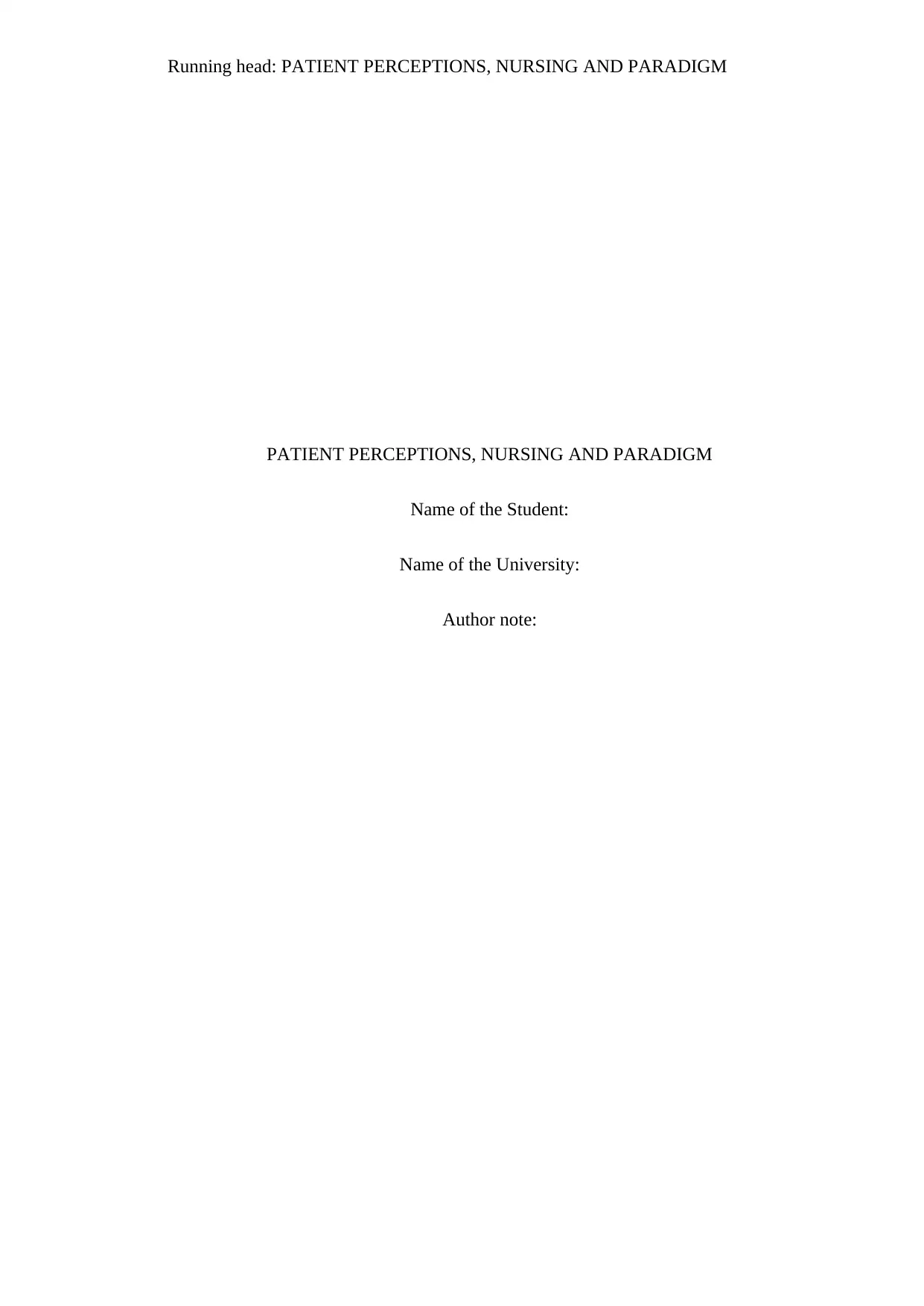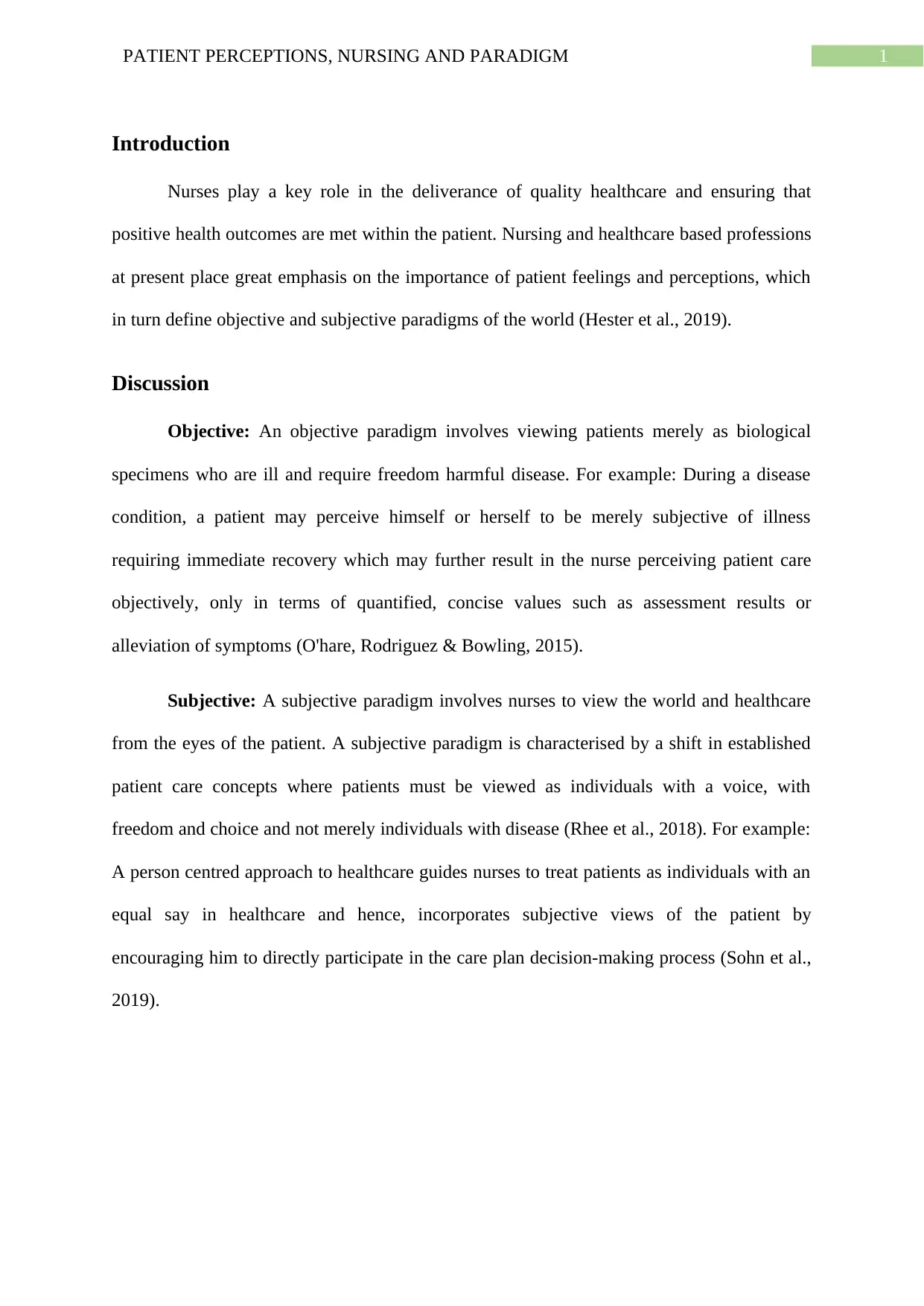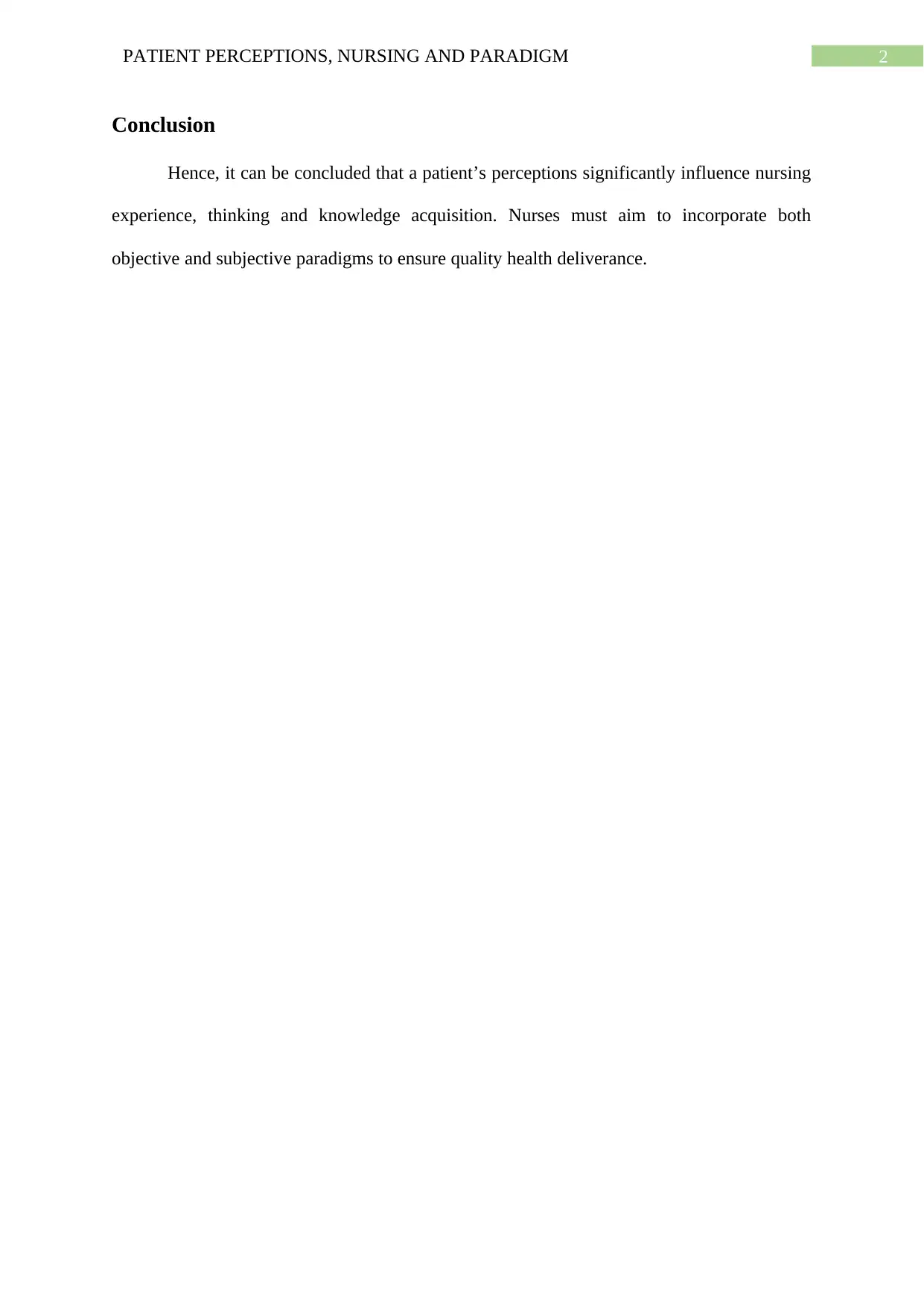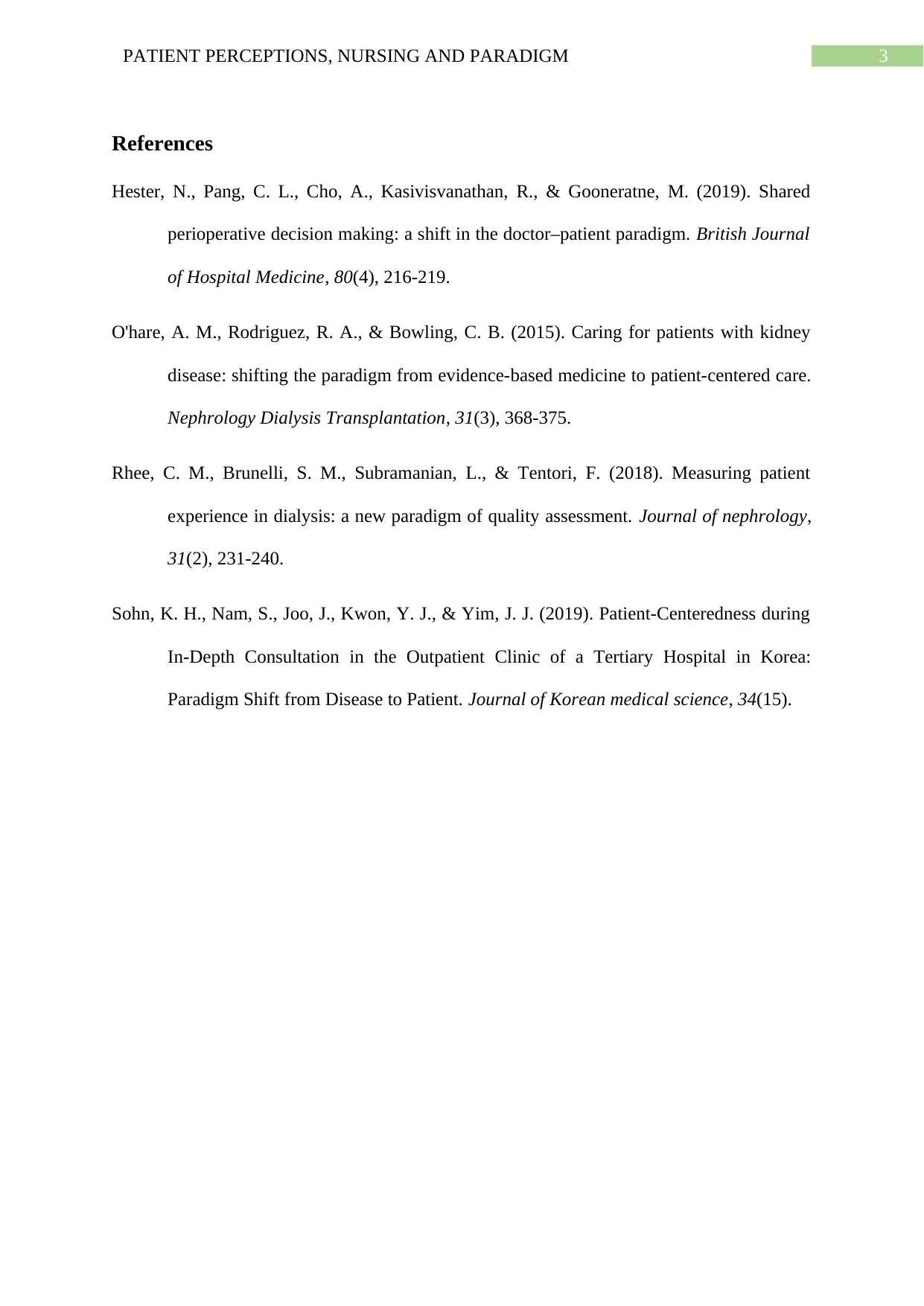Understanding Patient Perceptions and their Impact on Nursing Paradigm
VerifiedAdded on 2022/11/26
|4
|546
|162
Essay
AI Summary
This essay examines the significant influence of patient perceptions on nursing experience, thinking, and knowledge acquisition within the healthcare sector. It contrasts objective and subjective paradigms in nursing, highlighting the shift towards patient-centered care where individuals are viewed as active participants in their healthcare decisions. The objective paradigm involves viewing patients as biological specimens needing treatment, while the subjective paradigm emphasizes understanding healthcare from the patient's perspective, respecting their voice and choices. The essay concludes that nurses should integrate both paradigms to ensure high-quality health deliverance, emphasizing the importance of considering patient perceptions in nursing practice. Access the full document on Desklib for detailed insights and related materials to enhance your understanding.
1 out of 4





![[object Object]](/_next/static/media/star-bottom.7253800d.svg)